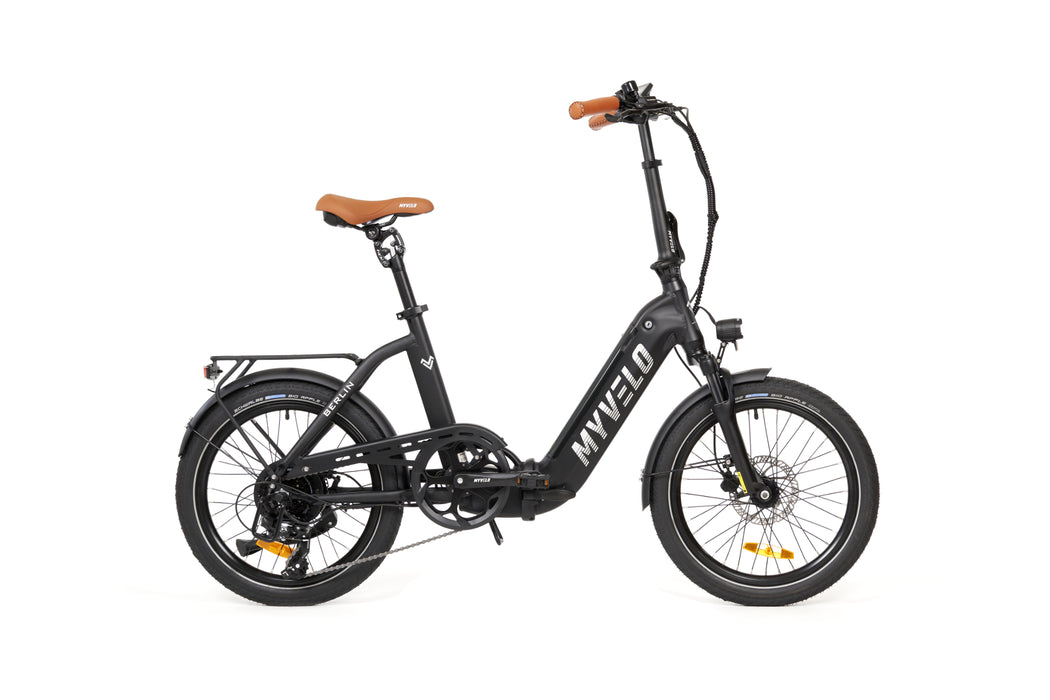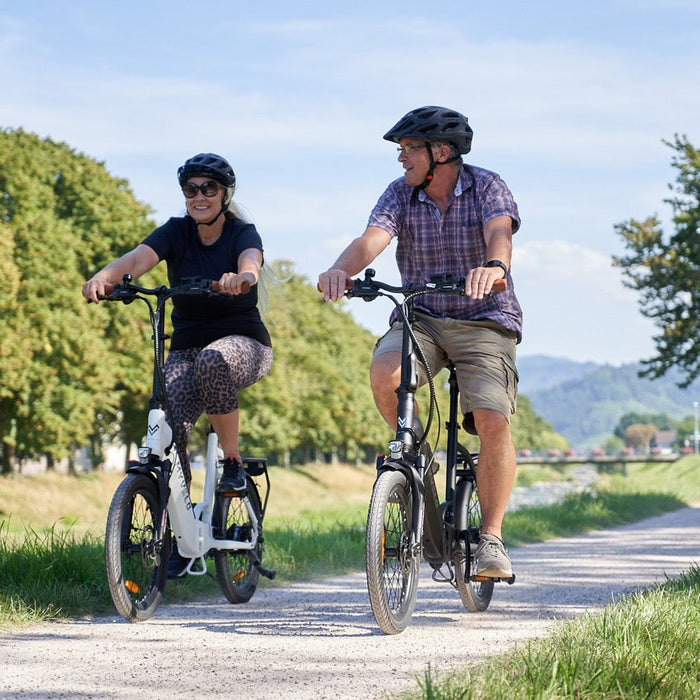
Berlin electric folding bike
incl. FREE shipping & free returns
Pre-order now. Delivery in early 2025

An e-bike inspection is a comprehensive check-up of your electric bike that aims to ensure its safety, performance and durability. During this inspection, all essential components of the e-bike, such as the electric drive, battery, brakes, tires and gears, are carefully checked. The aim is to identify and resolve potential problems early on, before they can lead to serious damage or even accidents. A regular e-bike inspection not only helps to maintain the optimal function of your e-bike, but also extends its service life and ensures a safe and pleasant riding experience.
Advantages
Disadvantages

Stress ist längst zur Volkskrankheit geworden – Dauerbelastung im Job, private Verpflichtungen und ständige Erreichbarkeit führen bei vielen Menschen zu einem Gefühl der Überforderung. Doch es gibt einen einfachen Weg, den Kopf freizubekommen: Radfahren. Ob gemütlich durch den Park oder sportlich auf dem Rennrad – das Fahrrad wirkt wie ein natürliches Ventil für Stress. Warum das so ist, zeigt dieser Artikel.

Der Kettenverschleiß ist bei E-Bikes ein noch wichtigeres Thema als bei klassischen Fahrrädern. Der leistungsstarke Motor unterstützt die Pedalkraft, wodurch eine höhere Belastung auf die Kette wirkt.

Der Eco Modus ist eine der wichtigsten Unterstützungsstufen eines E-Bikes und bietet eine ideale Balance zwischen Motorunterstützung und Energieeffizienz. Doch was genau bedeutet Eco Modus, wann sollte man ihn nutzen und welche Vorteile bringt er im Alltag? In diesem Artikel erfährst du alles Wichtige über diese smarte Fahrstufe.